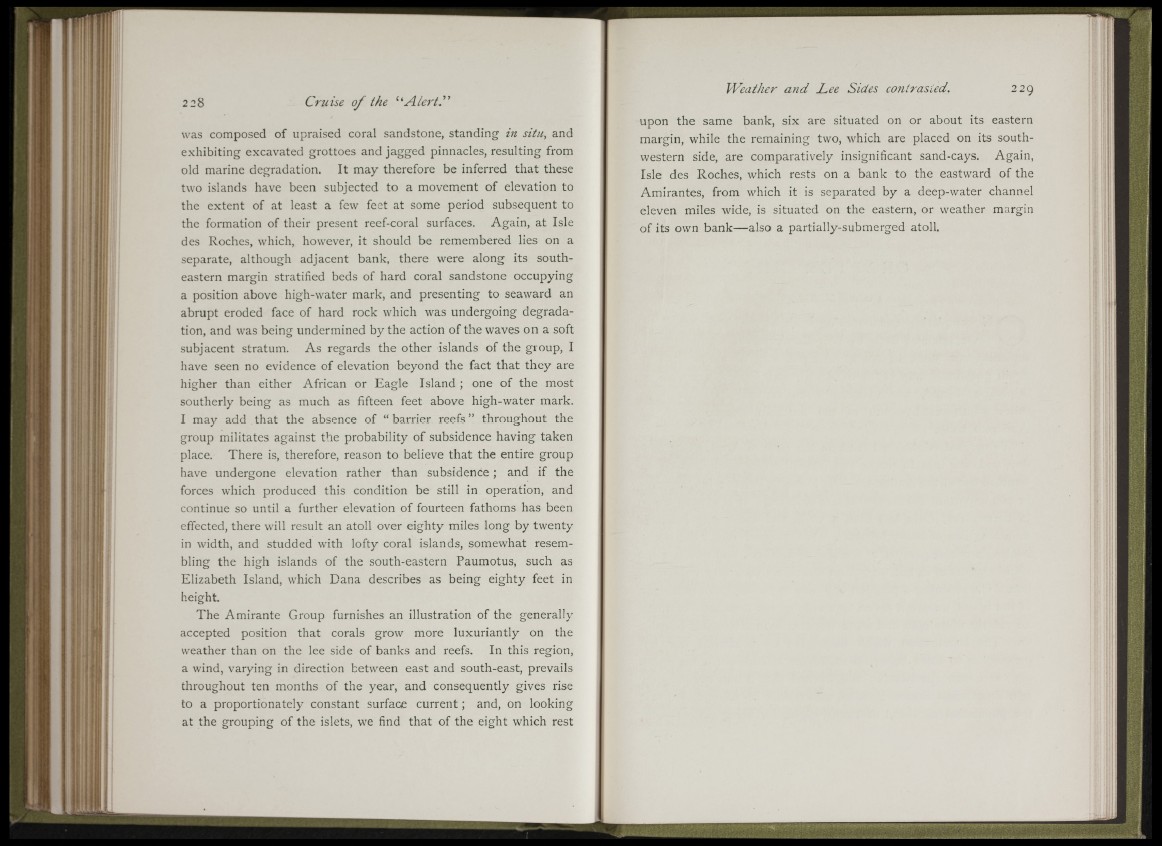
f l fA
tik
f4 .
j 1
I :A
L i ! ' \ }t
; '11
liN
228 Cruise o f the “ A/ert.”
was composed of upraised coral sandstone, standing in situ, and
exhibiting excavated grottoes and jagged pinnacles, resulting from
old marine degradation. It may therefore be inferred that these
two islands have been subjected to a movement of elevation to
the extent of at least a few feet at some period subsequent to
the formation of their present reef-coral surfaces. Again, at Isle
des Roches, which, however, it should be remembered lies on a
separate, although adjacent bank, there were along its southeastern
margin stratified beds of hard coral sandstone occupying
a position above high-water mark, and presenting to seaward an
abrupt eroded face of hard rock which was undergoing degradation,
and was being undermined by the action of the waves on a soft
subjacent stratum. As regards the other islands of the group, I
have seen no evidence of elevation beyond the fact that they are
higher than either African or Eagle Island ; one of the most
southerly being as much as fifteen feet above high-water mark.
I may add that the absence of “ barrier reefs ” throughout the
group militates against the probability of subsidence having taken
place. There is, therefore, reason to believe that the entire group
have undergone elevation rather than subsidence ; and if the
forces which produced this condition be still in operation, and
continue so until a further elevation of fourteen fathoms has been
effected, there will result an atoll over eighty miles long by twenty
in width, and studded with lofty coral islands, somewhat resembling
the high islands of the south-eastern Paumotus, such as
Elizabeth Island, which Dana describes as being eighty feet in
height.
The Amirante Group furnishes an illustration of the generally
accepted position that corals grow more luxuriantly on the
weather than on the lee side of banks and reefs. In this region,
a wind, varying in direction between east and south-east, prevails
throughout ten months of the year, and consequently gives rise
to a proportionately constant surface current; and, on looking
at the grouping of the islets, we find that of the eight which rest
Weather and Lee Sides conirasied. 229
upon the same bank, six are situated on or about its eastern
margin, while the remaining two, which are placed on its southwestern
side, are comparatively insignificant sand-cays. Again,
Isle des Roches, which rests on a bank to the eastward of the
Amirantes, from which it is separated by a deep-water channel
eleven miles wide, is situated on the eastern, or weather margin
of its own bank— also a partially-submerged atoll.